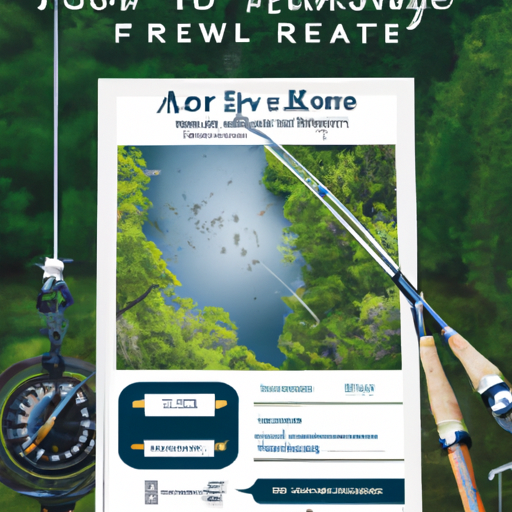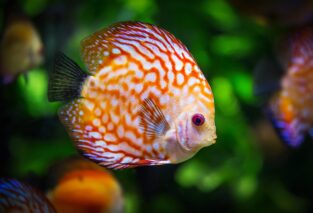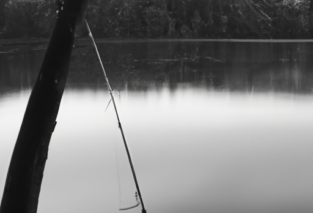Are you a beginner angler looking to navigate the world of fishing maps and apps? Look no further! “Deciphering Fishing Maps and Apps: A Guide for Beginners” is here to help you unravel the mysteries of these essential tools. With this comprehensive guide, you will gain the knowledge and confidence to interpret fishing maps and navigate fishing apps with ease. Whether you’re fishing on a lake, river, or out at sea, this guide will provide you with the essential skills to locate the best spots, understand water depths, and identify key features for a successful fishing trip. So grab your fishing gear and get ready to dive into the exciting world of fishing maps and apps!

Understanding Fishing Maps
Fishing maps are essential tools for every angler. They provide vital information about the water body you plan to fish in, allowing you to locate productive fishing spots and increase your chances of success. There are different types of fishing maps available, each with its own unique features and uses.
Types of Fishing Maps
-
Topographic Maps: These maps illustrate the physical features of the land surrounding the water body. They can help you identify underwater structures, such as points, drop-offs, and shallow areas, which are often prime locations for fish.
-
Bathymetric Maps: Bathymetric maps display the contours of the underwater terrain, including depth contours and submerged structures. These maps are particularly useful for understanding the depth variations and identifying potential fish-holding areas.
-
Navigation Charts: Navigation charts are primarily designed for boaters and provide information on water depths, navigational aids, and potential hazards. While not specifically designed for fishing, they can still be useful in identifying potential fishing spots.
Reading Fishing Maps
Once you have obtained a fishing map, it’s important to know how to read and interpret the information presented. Here are some key steps to consider:
-
Identify the Scale: The scale of the map determines the level of detail and the area covered. Larger scales provide more detail but cover smaller areas, while smaller scales cover larger areas but with less detail.
-
Understand Contours: Contour lines on bathymetric maps represent changes in water depth. The closer the contour lines, the steeper the drop-off or underwater structure. Understanding contour lines helps you locate areas where fish might be congregating.
-
Look for Structure: Pay attention to submerged structures marked on the map, such as weed beds, submerged vegetation, rock piles, or sunken trees. These areas attract fish as they provide shelter and food sources.
-
Note Navigational Aids: Navigation markers, buoys, or other aids are usually marked on navigation charts. These can be helpful reference points when navigating to specific fishing spots.
Interpreting Symbols and Markers
Fishing maps often use symbols and markers to indicate specific features or conditions. It’s important to familiarize yourself with these symbols to fully understand the information presented on the map. Here are some common symbols you may encounter:
-
Fishing Spots: Some maps may include symbols or icons indicating areas where fish are commonly found or where fishing has been successful in the past. These spots can be a good starting point for your fishing adventures.
-
Boat Ramps and Access Points: Look for symbols representing boat ramps, public access points, or places where you can launch your boat or access the water. These symbols help you plan your entry and exit points.
-
Hazards and Obstructions: Symbols such as rocks, wrecks, or submerged hazards help you avoid potentially dangerous areas while navigating.
-
Fishing Structures: Some maps may highlight artificial fishing structures like underwater reefs, fish attractors, or submerged vegetation planted specifically to enhance fish habitat. These marked areas can be productive fishing spots.
Using Fishing Apps
In today’s digital age, fishing apps have become invaluable resources for anglers. They bring fishing maps and other useful tools right to your fingertips, allowing you to access vital information on your smartphone or tablet. Understanding how to use fishing apps effectively can greatly enhance your fishing experience.
Types of Fishing Apps
Fishing apps come in various types, each offering unique features to improve your angling experience. Here are some commonly used fishing apps:
-
Mapping Apps: These apps offer detailed maps, similar to traditional paper maps, but with added interactive features. They allow you to zoom in, scroll around, and find specific fishing spots or structures.
-
Weather Apps: Weather apps provide real-time weather conditions, including temperature, wind speed, and precipitation. They are essential for planning your fishing trips and ensuring your safety on the water.
-
Fishing Log Apps: These apps help you keep track of your fishing adventures by allowing you to record catches, locations, and other relevant details. They help you analyze patterns and improve your fishing strategies over time.
Finding Fishing Spots
One of the primary benefits of fishing apps is their ability to locate fishing spots quickly and easily. Here’s how you can use fishing apps to find productive fishing spots:
-
Explore Interactive Maps: Utilize the interactive maps within fishing apps to explore the water body you plan to fish. Look for features such as contour lines, underwater structures, and potential hotspots indicated on the map.
-
User-Generated Data: Fishing apps often allow users to share information about their fishing experiences, including where they caught fish. Take advantage of this user-generated data to discover new fishing spots or gain insights into popular areas.
Get Real-Time Data
Fishing apps provide real-time data that can significantly improve your fishing success. By staying up to date with current conditions, you can make informed decisions while on the water. Here are some types of real-time data you can access through fishing apps:
-
Water Temperature: Many fishing apps provide information on water temperature, an essential factor in understanding fish behavior. Fish are temperature-sensitive, and knowing the water temperature can help you determine their preferred locations.
-
Wind and Weather Conditions: Check the wind speed and direction, as well as the weather forecast, through your fishing app. This information helps you plan your fishing trip and understand how weather patterns might affect fish activity.
-
Tides and Currents: If you are fishing in coastal areas or near tidal waters, fishing apps can provide valuable information on tides and currents. Understanding tidal movements is crucial for targeting certain species and fishing during optimal feeding times.
Best Practices for Using Fishing Maps and Apps
While fishing maps and apps can be incredibly helpful tools, it’s important to follow certain best practices to make the most of them and ensure a successful fishing trip.
Research the Area
Before heading out on your fishing adventure, take the time to research the area you plan to fish. Familiarize yourself with local fishing regulations, fish species in the area, and any specific guidelines or restrictions. Understanding the ecosystem and the fish you are targeting will greatly increase your chances of success.
Follow Local Regulations
It is crucial to adhere to local fishing regulations to maintain the sustainability of fish populations and protect the environment. Research and familiarize yourself with fishing regulations such as bag limits, size limits, and catch-and-release guidelines. Fishing apps may also provide information on local regulations, making it easy to stay compliant.
Combine Maps and Apps
To maximize your chances of success, consider combining traditional fishing maps with fishing apps. While apps provide real-time data and convenience, paper maps offer a more comprehensive view of the entire water body. By using both tools, you can get a better understanding of the fishing spots and plan your strategy more effectively.
Choosing the Right Fishing Map or App
With a plethora of fishing maps and apps available, it can be overwhelming to choose the right one for your needs. Here are some factors to consider when making your decision:
Consider Fishing Goals
Think about your specific fishing goals and what you hope to achieve with a fishing map or app. Are you targeting a specific species? Do you need real-time data? Choose a fishing map or app that aligns with your fishing objectives to ensure you have the right tools for success.
Check User Reviews
User reviews are a great way to gauge the effectiveness and reliability of a fishing map or app. Read reviews from other anglers to learn about their experiences and see if the tool meets their expectations. Look for apps or maps with positive reviews and a solid reputation within the fishing community.
Look for Additional Features
Consider what additional features you might find valuable in a fishing map or app. Some apps offer features such as offline maps, GPS tracking, or social sharing capabilities. Determine which features are important to you and choose a tool that provides the functionality you need.
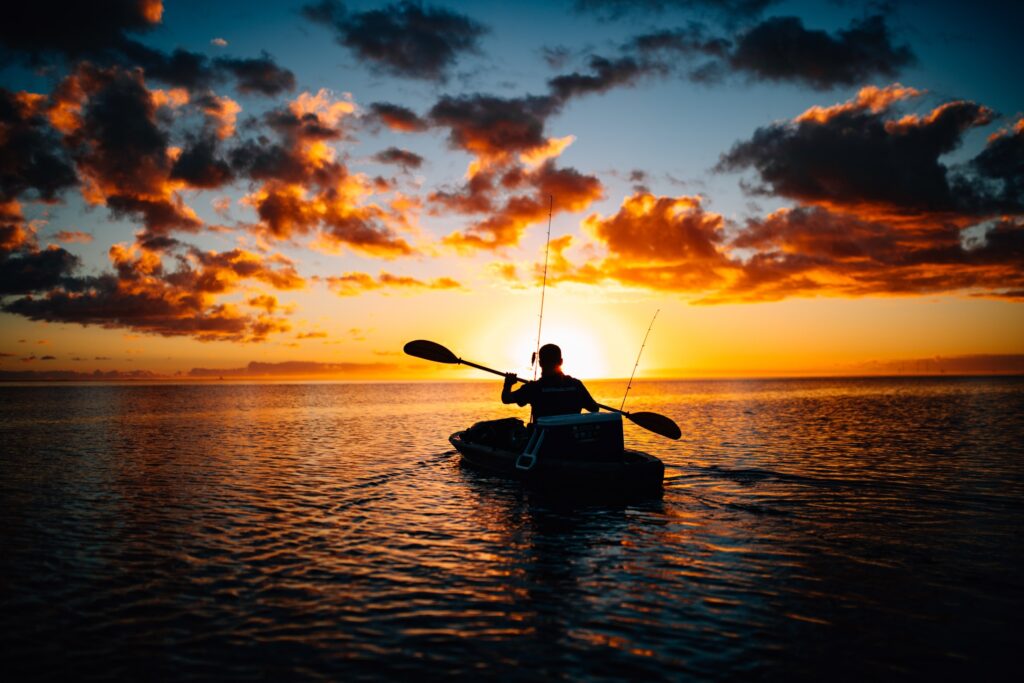
Preparing for Your Fishing Trip
Before setting off on your fishing trip, proper preparation is key to ensuring a smooth and successful outing. Here are some steps to follow when preparing to use your fishing map or app:
Study the Map or App
Take the time to study the fishing map or app you have chosen. Familiarize yourself with its features, symbols, and interface. Pay attention to areas of interest on the map, such as potential fishing spots, access points, and safety hazards. Understanding the map or app will set you up for a more efficient and enjoyable fishing experience.
Pack Necessary Gear
Prepare your fishing gear based on the information provided by your fishing map or app. If the map indicates the presence of submerged structures, ensure you have the appropriate tackle to target fish in those areas. Additionally, pack essentials such as fishing rods, reels, bait, and appropriate clothing for the weather conditions.
Plan Your Strategy
Using the information from your fishing map or app, develop a strategy for your fishing trip. Identify specific areas you want to target based on the map’s indications. Consider factors such as time of day, weather conditions, and fish species you are targeting. Having a plan in place will make your fishing trip more organized and purposeful.
Navigating Fishing Maps and Apps
Once you are on the water, knowing how to navigate fishing maps and apps is crucial for efficiently locating fishing spots and accessing important information.
Zooming and Panning
When using a fishing app, you can zoom in and out to get a closer or broader view of the map. Use the pinch-to-zoom gesture or the zoom buttons provided to adjust the level of detail. Panning allows you to move the map around to explore different areas. Simply swipe or drag your finger across the screen to pan in any direction.
Switching Map Views
Some fishing apps offer different map views, such as satellite imagery, topographic maps, or hybrid views. Experiment with different map views to find the one that suits your needs and preferences. Different map views can provide additional details or perspectives on the water body you are fishing.
Bookmarking and Saving Locations
When you come across a promising fishing spot or a place of interest, use the bookmark or save location feature within your fishing app. This allows you to easily reference and revisit these locations in the future. Bookmarking spots helps you build a personalized database of productive fishing areas for future excursions.

Understanding Fishing Data on Maps and Apps
Fishing maps and apps offer various types of data that can significantly enhance your fishing success. Familiarize yourself with the different types of data available to make informed decisions while on the water.
Water Temperature and Depth Information
Some fishing apps provide real-time water temperature and depth information. These factors greatly affect fish behavior and can guide your fishing strategies. Knowing the water temperature helps you determine the areas where fish are likely to be more active, while depth information allows you to locate ideal holding areas.
Fish Species and Habitat Data
Certain fishing apps include databases of local fish species and their preferred habitats. Understanding the typical behavior and habitat preferences of the fish you are targeting can help you narrow down potential fishing spots. By identifying the preferred habitats of the fish species you are after, you can increase your chances of a successful catch.
Tides and Currents
Fishing in tidal or current-driven waters requires an understanding of their influence on fish behavior. Fishing apps can provide information on tides and currents, helping you determine the optimal times to fish and the areas that are likely to hold more fish. Plan your fishing trips around tidal movements to maximize your chances of hooking into fish.
Using Social Features on Fishing Apps
Many fishing apps offer social features that allow you to connect with other anglers, share experiences, and learn from the fishing community. These features can enhance your fishing journey in several ways.
Sharing Photos and Tips
Fishing apps often have features for sharing photos, catch reports, and fishing tips. Sharing your catches and experiences not only allows you to showcase your success but also helps others in the fishing community. Additionally, you can browse through other anglers’ photos and read their tips to gain insights and inspiration for your own fishing trips.
Joining Fishing Communities
Some fishing apps have dedicated fishing communities or forums where anglers can interact, ask questions, and share knowledge. Joining these communities allows you to connect with experienced anglers, seek advice, and participate in discussions. Being part of a fishing community opens up opportunities for learning and networking within the fishing world.
Finding Local Experts
Fishing apps often have features that allow you to find and connect with local fishing guides or experts in specific areas. These experts can provide valuable insights into local fishing conditions, techniques, and hotspots. Engaging with local experts through fishing apps can greatly enhance your understanding of the local fishing scene and improve your chances of success.
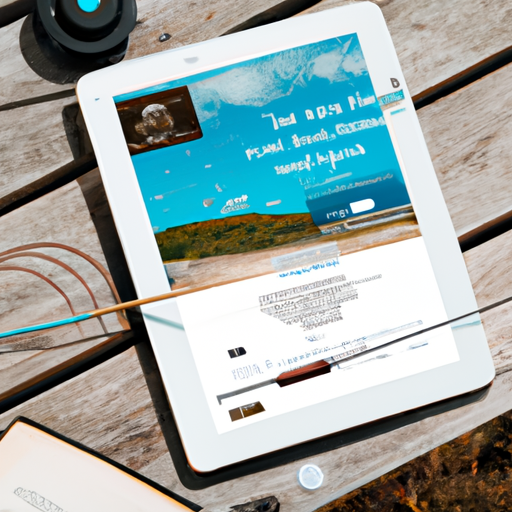
Troubleshooting Common Issues
While fishing maps and apps are generally reliable, you may encounter some common issues while using them. Here are a few troubleshooting tips to overcome these obstacles:
Poor Reception or Connectivity
If you are in an area with poor reception or limited connectivity, it may affect the performance of your fishing app. To mitigate this issue, consider downloading offline maps before your trip or invest in a reliable cellular or satellite signal booster. These measures can help improve reception and ensure you have access to the app’s features.
Inaccurate or Outdated Information
While fishing maps and apps strive to provide accurate information, there may be instances when the data is outdated or inaccurate. To verify the information, cross-reference the app’s data with other reputable sources, such as local fishing reports, fishing forums, or guidebooks. Additionally, keep in mind that conditions on the water can change, so regular updates and staying observant are essential.
Technical Glitches
Like any other digital tool, fishing apps may occasionally experience technical glitches or bugs. If you encounter any issues, try closing and reopening the app, clearing the cache, or restarting your device. If the problem persists, reach out to the app’s support team for assistance. Updating the app to the latest version can also resolve potential technical issues.
Tips for Beginners
If you are new to fishing or using fishing maps and apps, here are some tips to help you get started and improve your skills over time:
Start with Basic Maps and Apps
As a beginner, it’s best to start with straightforward fishing maps and apps that are easy to understand and navigate. Focus on learning the basics of reading maps, understanding contours, and finding fishing spots. As you gain more experience and confidence, you can explore more advanced tools and features.
Learn from Experienced Anglers
Take advantage of the knowledge and experience of more seasoned anglers. Participate in fishing forums or community events where you can connect with experienced anglers and learn from their insights. Asking questions, observing their techniques, and listening to their advice can help you accelerate your learning curve.
Constantly Improve Your Skills
Fishing is a lifelong learning process. No matter your skill level, always strive to improve and expand your knowledge. Experiment with different techniques, try new fishing spots, and challenge yourself to target different fish species. Reflect on your fishing experiences, identify areas for improvement, and seek opportunities to enhance your skills through practice and learning resources.
In conclusion, fishing maps and apps are invaluable tools for anglers of all levels. By understanding how to decipher fishing maps, navigate fishing apps, and utilize the data they provide, you can enhance your fishing experience and increase your chances of success on the water. Remember to conduct thorough research, follow local regulations, and choose the right map or app based on your fishing goals. With proper preparation, practice, and continuous learning, you’ll be well on your way to becoming a skilled angler.
